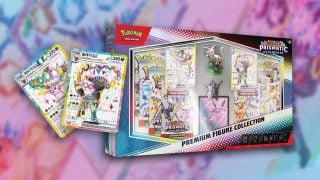The question of “are video games art” has, for all intents and purposes, been settled — while there are still those who resist confronting games as seriously or critically as they should be, the general masses have long accepted the notion that video games as a medium can be meaningful, impacting, or even life-changing. Relationships, careers, personal journeys, and even society at large have been affected by countless games, stretching back to the very foundations of the medium with the likes of Spacewar or Pong.
The argument of when video games started to be considered art is separate from the issue of when they started to be art — and while I find the latter question much more pressing, it’s also so much easier to answer. Video games have basically always been art. Not in the same way that books and movies might be, but from the earliest titles in arcades there were deliberate attempts to try and create the most fun or engaging experiences imaginable. And even beyond just the scope of game design, early gaming is filled with artistic or political statements. Samus taking off her helmet to reveal she’s a woman at the end of Metroid was meaningful. The fact that every army member in Fire Emblem had a name and face and could die was meaningful. Even some of the more out-there game concepts like Mario and Kirby could have meaning, however far-reaching and abstract, imbued into them. (Is the original Donkey Kong about socialism? More at 11.)
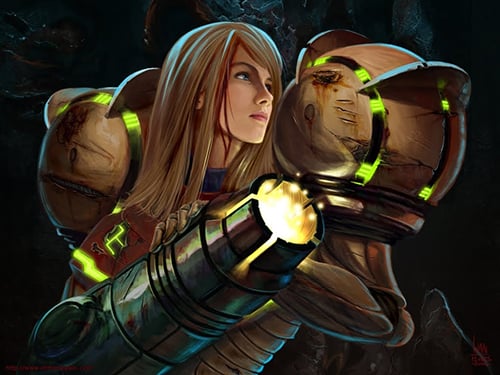
But even so, among those early games, the stories were often extremely simple; and while their messages were often important or interesting, even RPGs of the era didn’t really utilize the medium of video games as a storytelling device in and of itself, often segregating plot from game mechanics for anything beyond the level of “fight bad guy.” Early Final Fantasies and their ilk did have some wonderful plots — some of which still hold up today — but it came at a time in which video games were still a fledgling medium, and developers hadn’t yet really prioritized artistic gestures over trying to make a game simple and fun. Whether or not that’s a bad thing is obviously subjective, but I don’t think it’s much of a stretch to say that the artistic aspirations of early gaming are quite on the same level as the storytelling of mediums like literature or theater that have existed for thousands of years.
And then, a copywriter of mild celebrity from Japan named Shigesato Itoi came along.
It’s difficult to characterize exactly how much impact Itoi has had on gaming as an art form — he certainly wasn’t the first game developer to include a story in a game, and the mechanics of his game series are generally regarded as unremarkable — but I think it’s impossible to deny just how much the Mother series established itself as something different from the norm. From its modern day setting to its goofy atmosphere and humor to its stories rife with nostalgic sentimentality, Itoi and his team brought a new sensibility to the medium of video games — and changed it forever.
Obviously, quite a bit of this innovation emerged in the series’ first entry, EarthBound Beginnings (nee Mother 1), but it was Itoi’s second game — which cribbed and polished a great deal from the first — that established itself as a cultural touchstone in the West. Despite poor initial sales due to an infamous odor-based marketing campaign and a perceived lack of graphical innovation, EarthBound went on to inspire an entire generation of fans, generate the most devoted cult following in all of Nintendo, and become one of the most widely respected, revered, and cherished video games ever made. Today, it celebrates 25 years since release — and it hasn’t aged a day.
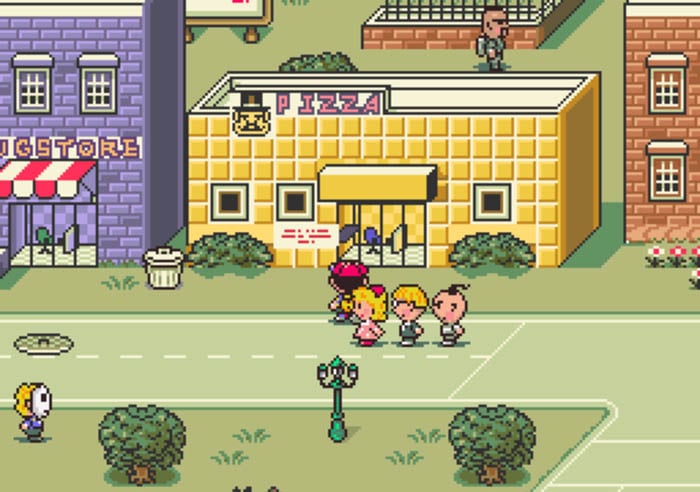
Characterizing what makes EarthBound important is deceptively difficult. Many critiques focus on the surface-level oddities — the ’50s Americana setting, the tongue-in-cheek tone, and the idea that you’re a bunch of suburbanite teens wielding baseball bats and frying pans against alien invaders. All of this certainly does demonstrate the game’s strong sense of personality, which continues to stick out from its medieval fantasy contemporaries all these decades later — but I don’t think they really showcase the heart of what makes EarthBound so lasting.
Which is just that — its heart.
EarthBound is a game that connects itself to the player in a strangely personal way. Its main characters don’t have a lot of dialogue and interactions. The plot, despite its many abstractions, is pretty straightforward in concept. There are no weighty philosophical questions or deep moral crises. On paper, it would seem to be a game lacking in emotional impact.
And yet, the game’s world is rich with personality; dense in its meaning; and vibrant with recognizable images, ideas, and symbols. Most media uses pop culture references as quick, easy gags, effortless jokes that simply rely on the audience knowing about something — but EarthBound uses those same references to instead establish its world, which acts as almost a pastiche of reality. By making winks towards the Beatles, strange cults, and a cornucopia of other American relics of the 20th century, it diminishes the gap between fantasy and reality, imparting a sense of realness that other games at the time shied away from while keeping a level of surreality that made it pop out in the mind. I think EarthBound doesn’t resonate as strongly if you grow up outside of the cultural images that lace every inch of it — of my few European friends who I know that have played it, it simply hasn’t stuck with them as it has with American and Japanese audiences (whose post-war society was heavily influenced by US values and imagery).
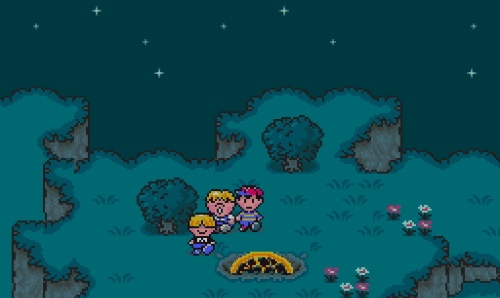
EarthBound is also notable for having one of the most expensive and thorough game localizations at the time, in order to uphold Itoi’s very unique writing style. Localizer Marcus Lindblom — alongside Japanese writer Masayuki Miura, who helped contextualize Itoi’s original intent — worked himself to the bone in an effort to retain Mother 2’s tone and sensibilities for the American release. I would go out on a limb and declare EarthBound’s localization to be the best the medium had ever seen at the time of its release, and perhaps long after: at a time when many big RPGs were still rife with mistranslations or memetic errors, EarthBound’s script was silky smooth and distinctly memorable, providing a new standard for game writing at a time when game plots were still largely devalued in comparison to gameplay elements.
All of that is significant, and on its own would be more than laudatory. But EarthBound’s greatest innovation is not its tone, or setting, or even its writing style — it’s the fact that it was among the first video games to actually acknowledge the player as an entity in the world, and the relationship between player and game in a way that nothing else had up to that point. By cheekily and directly asking the player for their name at multiple points in the story, EarthBound breaks down the fourth wall that it had already poked several holes into, fully embracing the importance of the player in Ness’s journey. And it all culminates in what might be the greatest moment in any video game, ever.
(Spoilers for the end of EarthBound ahead…)
At the end of their long and perilous quest, during which Ness and his friends have literally abandoned their humanity to confront the source of all evil, they finally come face to face with Giygas. Initially a mere creepy eyeball reflecting Ness’s visage, his true form is swiftly revealed to be a swirling, shapeless mass of eldritch red, indefinable and incomprehensible. While the party puts up a good fight, they eventually are left helpless against the maelstrom, leaving only one option left: pray. Paula cries out, and friends from throughout their journey offer support, leading to Giygas shriveling in pain — but it’s not enough. Paula’s prayers quickly lose power, becoming swallowed by the darkness, and all seems lost.

But then, a new person — name partially blotted by white dots — lends them support.
The player, with all their heart, prays for the party’s victory, dealing the final blow, and vanquishing Giygas for good.
This, to me, has always been the standout moment. The point in which EarthBound transcends itself and goes beyond the scope of entertainment to become something that can’t be put into words. The sensation of having oneself be so closely connected to these characters on screen — not merely of relating to them, but actively responsible (and acknowledged) for their victories — is irreplaceable. It was the first great metatextual moment in video games. And it was one of the first great examples of something that video games — and only video games — can do as a medium.
It’s no wonder why EarthBound is probably one of the most commonly cited inspirations for games of all sorts (to the point that people misattribute it as an influence). Among the many titles of the SNES that still hold up, EarthBound has aged among the best, still as quirky and vivacious and tender as it was 25 years ago. It’s transformed from a commercial failure to one of the most universally loved games in Nintendo’s catalogue. It’s a game so good that in my own opinion the only one that could possibly match it is its own sequel, which western players are still clamoring for after over 13 years of waiting.
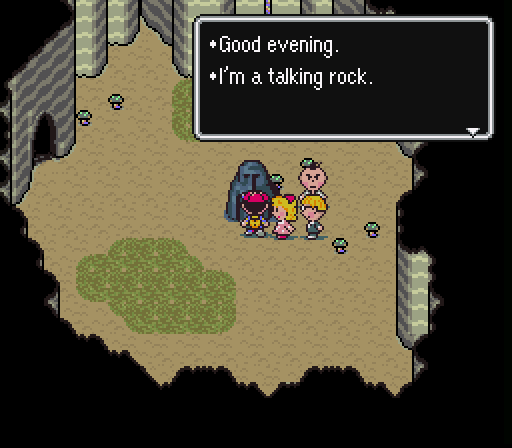
There’s so much more I haven’t even gotten into — like the game’s fascinating development (which was almost single-handedly saved by the late, great Satoru Iwata), the subdued soundtrack, or the incredible journey of the game’s fandom over the years. Even as a singular game, it’s too wonderfully dense to possibly cover in one concise column. And I could only dream of being able to encapsulate all of the ways that make it special. That’s why it’s art.
EarthBound is such a personal game; one so transformative, abstract, and malleable that I think everybody who plays it takes something different away from it. It came to me at a transformative time in my life, and it changed me and my outlook on the world profoundly. More than a decade after I played it for the first time, it is my favorite game of all-time, and one that I find endlessly playable, able to come back to it time after time with fresh eyes. So in lieu of a lionizing last note, or a bold statement as to its cultural importance, I just want to say one thing:
Thank you, Mr. Itoi, Mr. Iwata, Mr. Lindblom, and everybody else who made this game a reality. I’m sure it will affect many more people for the next 25 years to come.
Leave a Comment


